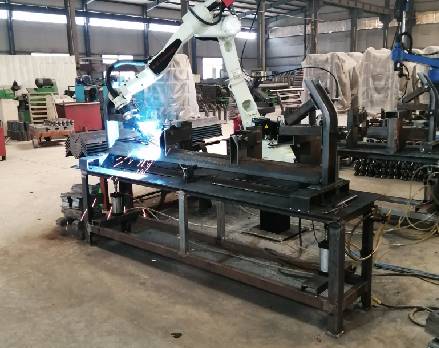 Afrikaans
Afrikaans  Albanian
Albanian  Amharic
Amharic  Arabic
Arabic  Armenian
Armenian  Azerbaijani
Azerbaijani  Basque
Basque  Belarusian
Belarusian  Bengali
Bengali  Bosnian
Bosnian  Bulgarian
Bulgarian  Catalan
Catalan  Cebuano
Cebuano  Corsican
Corsican  Croatian
Croatian  Czech
Czech  Danish
Danish  Dutch
Dutch  English
English  Esperanto
Esperanto  Estonian
Estonian  Finnish
Finnish  French
French  Frisian
Frisian  Galician
Galician  Georgian
Georgian  German
German  Greek
Greek  Gujarati
Gujarati  Haitian Creole
Haitian Creole  hausa
hausa  hawaiian
hawaiian  Hebrew
Hebrew  Hindi
Hindi  Miao
Miao  Hungarian
Hungarian  Icelandic
Icelandic  igbo
igbo  Indonesian
Indonesian  irish
irish  Italian
Italian  Japanese
Japanese  Javanese
Javanese  Kannada
Kannada  kazakh
kazakh  Khmer
Khmer  Rwandese
Rwandese  Korean
Korean  Kurdish
Kurdish  Kyrgyz
Kyrgyz  Lao
Lao  Latin
Latin  Latvian
Latvian  Lithuanian
Lithuanian  Luxembourgish
Luxembourgish  Macedonian
Macedonian  Malgashi
Malgashi  Malay
Malay  Malayalam
Malayalam  Maltese
Maltese  Maori
Maori  Marathi
Marathi  Mongolian
Mongolian  Myanmar
Myanmar  Nepali
Nepali  Norwegian
Norwegian  Norwegian
Norwegian  Occitan
Occitan  Pashto
Pashto  Persian
Persian  Polish
Polish  Portuguese
Portuguese  Punjabi
Punjabi  Romanian
Romanian  Russian
Russian  Samoan
Samoan  Scottish Gaelic
Scottish Gaelic  Serbian
Serbian  Sesotho
Sesotho  Shona
Shona  Sindhi
Sindhi  Sinhala
Sinhala  Slovak
Slovak  Slovenian
Slovenian  Somali
Somali  Spanish
Spanish  Sundanese
Sundanese  Swahili
Swahili  Swedish
Swedish  Tagalog
Tagalog  Tajik
Tajik  Tamil
Tamil  Tatar
Tatar  Telugu
Telugu  Thai
Thai  Turkish
Turkish  Turkmen
Turkmen  Ukrainian
Ukrainian  Urdu
Urdu  Uighur
Uighur  Uzbek
Uzbek  Vietnamese
Vietnamese  Welsh
Welsh  Bantu
Bantu  Yiddish
Yiddish  Yoruba
Yoruba  Zulu
Zulu take up pulley in belt conveyor
Understanding the Take-Up Pulley in Belt Conveyors
Belt conveyors are integral to various industries, facilitating the efficient movement of materials over considerable distances. Among the many components that contribute to the smooth operation of a belt conveyor, the take-up pulley plays a critical role. This article delves into the function, types, and significance of the take-up pulley in belt conveyor systems.
Understanding the Take-Up Pulley in Belt Conveyors
There are two main types of take-up pulleys static and dynamic. Static take-up systems use a fixed weight or mechanical system to maintain tension, while dynamic take-up systems employ a movable pulley arrangement that automatically adjusts tension as the belt stretches and wears over time. Dynamic take-up systems are favored in many modern designs because they can adapt more effectively to changing conditions, such as variations in belt load and length.
take up pulley in belt conveyor

The placement of the take-up pulley is also crucial. Typically, it is found at the end of the conveyor system and is connected to the adjustable or fixed tensioning mechanism. This location allows it to respond effectively to the changing length of the belt caused by wear and thermal expansion. Proper installation and maintenance of the take-up pulley can significantly enhance the overall performance of the conveyor system.
Moreover, regular inspections and adjustments to the take-up pulley are necessary to ensure optimal performance. Over time, wear and tear can lead to decreased tension, resulting in operational inefficiencies. Therefore, conveyor operators should schedule routine checks to monitor the condition of the take-up pulley and its associated components.
In terms of design, take-up pulleys can be configured in various ways to suit specific applications. The choice of materials, pulley diameter, and groove design can significantly affect the take-up pulley’s efficiency and effectiveness. It is essential for engineers to consider these factors when designing a belt conveyor system to ensure it meets the operational demands of the environment in which it will be used.
In conclusion, the take-up pulley is a vital component of a belt conveyor system, serving to maintain belt tension and ensuring smooth and efficient operation. Understanding its function, types, and maintenance needs can help industries improve their material handling processes, leading to increased productivity and reduced operational costs. As technology advances, innovations in take-up pulley design will continue to enhance the efficiency of belt conveyor systems, making them even more indispensable in modern industrial applications.
-
Revolutionizing Conveyor Reliability with Advanced Rubber Lagging PulleysNewsJul.22,2025
-
Powering Precision and Durability with Expert Manufacturers of Conveyor ComponentsNewsJul.22,2025
-
Optimizing Conveyor Systems with Advanced Conveyor AccessoriesNewsJul.22,2025
-
Maximize Conveyor Efficiency with Quality Conveyor Idler PulleysNewsJul.22,2025
-
Future-Proof Your Conveyor System with High-Performance Polyurethane RollerNewsJul.22,2025
-
Driving Efficiency Forward with Quality Idlers and RollersNewsJul.22,2025





























